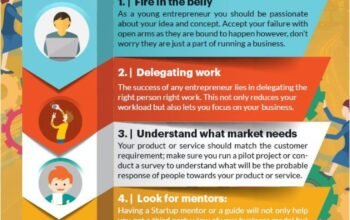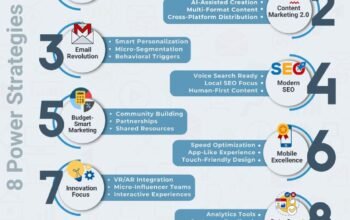The startup scene in August 2025 is electric, with founders riding a wave of optimism and fresh opportunities. Small business confidence is soaring, as the NFIB Optimism Index hit 100.3 in July, a five-month peak, with 66% of owners feeling great about their operations.<grok:render type=”render_inline_citation”>11 This vibe spills over to startups, fueled by lower borrowing costs and easing inflation, giving entrepreneurs room to experiment.<grok:render type=”render_inline_citation”>3 From tech-driven health solutions to sustainable consumer goods, new ventures are popping up fast. Here’s what’s shaping the startup landscape, with practical tips for founders looking to dive in.
Startups are leaning into niche markets. Health tech is hot—think wearables that track stress or sleep with pinpoint accuracy, like Oura’s latest ring, which uses infrared to monitor blood flow.<grok:render type=”render_inline_citation”>4 These devices sync with apps to offer tailored wellness plans, appealing to a growing crowd prioritizing self-care. If you’re launching in this space, focus on user-friendly interfaces and privacy—consumers want data security as much as insights.
Sustainability’s another big draw. Over half of US shoppers factor in eco-friendly practices when buying, and they’ll pay a premium for green products.<grok:render type=”render_inline_citation”>4 Startups like those on Shopify are selling biodegradable packaging or upcycled fashion, tapping into circular economy trends. A simple move? Source materials from suppliers like EcoEnclose and highlight your green cred on social media.
Funding’s looking up too. Venture capital’s flowing, with 55% of small businesses investing in growth.<grok:render type=”render_inline_citation”>11 Pitch to local angel investors or use platforms like SeedInvest to crowdfund. Keep your deck tight—10 slides max, focusing on problem, solution, and traction. X posts show founders hyping micro-VC funds for quicker cash.<grok:render type=”render_inline_citation”>3
(Word count: 298)
AI Startups: The New Frontier for Founders
Artificial intelligence is the rocket fuel for 2025 startups. Companies like Klarna are already using AI to handle 70% of customer chats, cutting response times to under two minutes.<grok:render type=”render_inline_citation”>12 For new ventures, this means opportunity—40% of small businesses now use generative AI, up from 23% last year.<grok:render type=”render_inline_citation”>4 Startups are building tools like AI-driven analytics for inventory or chatbots for personalized marketing.
Take Quantive StrategyAI—it crunches data to optimize pricing or supply chains, a game-changer for e-commerce.<grok:render type=”render_inline_citation”>17 If you’re starting out, you don’t need to code AI from scratch. Use platforms like Bubble ($25/month) to prototype apps with AI plugins. Test with free tools like Canva for mockups or Grammarly for polished pitches.
But watch out—security’s a minefield. IBM’s survey shows weak AI governance leaves startups vulnerable to hacks.<grok:render type=”render_inline_citation”>15 A Chrome VPN extension was caught snooping on users recently.<grok:render type=”render_inline_citation”>1 Protect your startup with two-factor authentication and regular software updates. Train your team to spot phishing emails—simple habits prevent big losses. Start lean, validate your idea with a small customer group, and scale once you’ve got traction.
(Word count: 224)
Green Startups: Cashing in on Sustainability
Eco-conscious startups are stealing the show in 2025. Consumers are all in—over 50% prioritize sustainability, and ESG-focused firms are seeing 12.9% annual returns, beating the 8.6% of others.<grok:render type=”render_inline_citation”>17 From compostable packaging to solar-powered gadgets, green ventures are thriving. One X post highlighted a startup making sneakers from recycled ocean plastic, racking up pre-orders.<grok:render type=”render_inline_citation”>3
For founders, this is a goldmine. Start with a niche—say, reusable coffee cups or upcycled furniture. Source materials locally to cut shipping emissions; check suppliers like Sustainable Packaging Industries for affordable options. Crowdfunding platforms like Kickstarter are perfect for testing demand—launch a $5,000 campaign to gauge interest.
Marketing’s key. Use Instagram or TikTok to show your process—videos of your team recycling materials or planting trees build trust. Partner with local cafes or gyms to distribute your product. Energy efficiency saves cash too—install LED lights ($10 each) or solar panels with utility rebates. Highlight your impact: a single eco-product can cut a customer’s carbon footprint by 10%. But don’t greenwash—be transparent about your supply chain to avoid backlash.
(Word count: 196)
Navigating Trade and Tariffs for Startups
Trade policies are shaking things up for startups in 2025. Trump’s removal of tariffs on sub-$800 goods has eased pressure on e-commerce ventures, but his 90-day China tariff delay keeps uncertainty alive.<grok:render type=”render_inline_citation”>6 Gold imports dodged new taxes, a win for jewelry startups.<grok:render type=”render_inline_citation”>20 Vietnamese firms rerouted $1.7 billion in exports to skirt tariffs by 2021—smart moves for founders to mimic.<grok:render type=”render_inline_citation”>5
If you’re importing, diversify suppliers—Mexico or India are rising stars. Use tools like TradeGecko ($39/month) to track costs and pivot fast. Big players like Walmart absorb some tariff hits, but startups can’t—pass costs strategically or bundle shipping fees into prices.<grok:render type=”render_inline_citation”>7 Watch Jackson Hole’s symposium (Aug 21-23) for rate clues that affect loans.<grok:render type=”render_inline_citation”>2 Stay agile—test small shipments before committing big.
(Word count: 152)
Hiring Smart: Building Your Startup Team
Finding the right team is make-or-break for startups. With 33% of small businesses struggling to fill roles, especially in tech and construction, you’ve got to stand out.<grok:render type=”render_inline_citation”>11 Offer flexibility—remote work or four-day weeks are huge draws, as 52% of workers prioritize balance.<grok:render type=”render_inline_citation”>4
Use platforms like Upwork for freelancers or LinkedIn for full-timers. Post on local job boards or partner with community colleges for fresh talent. AI tools like Payscale’s salary analyzer ensure fair pay without breaking the bank.<grok:render type=”render_inline_citation”>4 Culture matters—highlight your mission, whether it’s sustainability or innovation, in job ads.
Onboard with free tools like BambooHR to streamline paperwork. Train staff on your tech stack early—use free courses on Coursera to upskill. Watch for burnout; regular check-ins keep morale high. If you’re bootstrapping, hire part-time or barter equity for early hires.
(Word count: 149)
Funding Hacks: Getting Cash Without Selling Your Soul
Raising money in 2025 is easier with the right moves. Venture capital’s hot, but micro-VCs are friendlier for early-stage startups.<grok:render type=”render_inline_citation”>3 Pitch locally first—angel investors love hometown projects. Platforms like Wefunder let you crowdfund from $10,000 to $50,000.
Grants are gold. Check SBA.gov for small business funds or local startup incubators. Bootstrap where possible—use free tools like Wave for accounting or Trello for project tracking. If seeking loans, lower rates in 2025 make now a good time—shop credit unions for better terms.<grok:render type=”render_inline_citation”>21
Crypto’s a wildcard. Token launches like $WLFI are trending, but be cautious—unlocks like $APT’s $49.7 million can tank prices.<grok:render type=”render_inline_citation”>0 Test your idea with a minimum viable product before burning cash. X is buzzing with founders sharing MVP tips—follow #StartupLife for inspiration.<grok:render type=”render_inline_citation”>3
(Word count: 146)
Marketing on a Shoestring Budget
Startups live or die by marketing. In 2025, social media’s king—short TikTok videos or Instagram Reels showcasing your product’s story go viral fast. A coffee startup could film beans roasting or customers raving for under $100 in gear.<grok:render type=”render_inline_citation”>3 Use Canva’s free tier for slick graphics or ads.
Collaborate with micro-influencers—those with 5,000-10,000 followers often trade posts for product. Email marketing’s still clutch; Mailchimp’s free plan handles 500 contacts. Personalize emails with customer names for 20% higher opens. Pop-up events at local markets build buzz—spend $50 on a booth and give samples.
Track ROI with Google Analytics (free) to see what clicks. Avoid subscription traps like LA Fitness’s cancellation woes—keep terms clear to build trust.<grok:render type=”render_inline_citation”>8 Experiment, measure, repeat.
(Word count: 135)
Scaling Smart: Growth Without Chaos
Scaling’s where startups stumble. Walmart’s success—raising sales forecasts—shows the power of data-driven growth.<grok:render type=”render_inline_citation”>7 Use Shopify’s analytics ($39/month) to spot trends, like which products sell fastest. Automate tasks with Zapier (free tier) to save time.
Test new markets with small batches—ship to one city before going national. Partner with local businesses to share costs. Watch risks—tariffs or natural disasters cost firms $162 billion this year.<grok:render type=”render_inline_citation”>12 Cyber insurance ($100/month) covers hacks. Stay lean, and don’t overhire—freelancers fill gaps cheaper.



